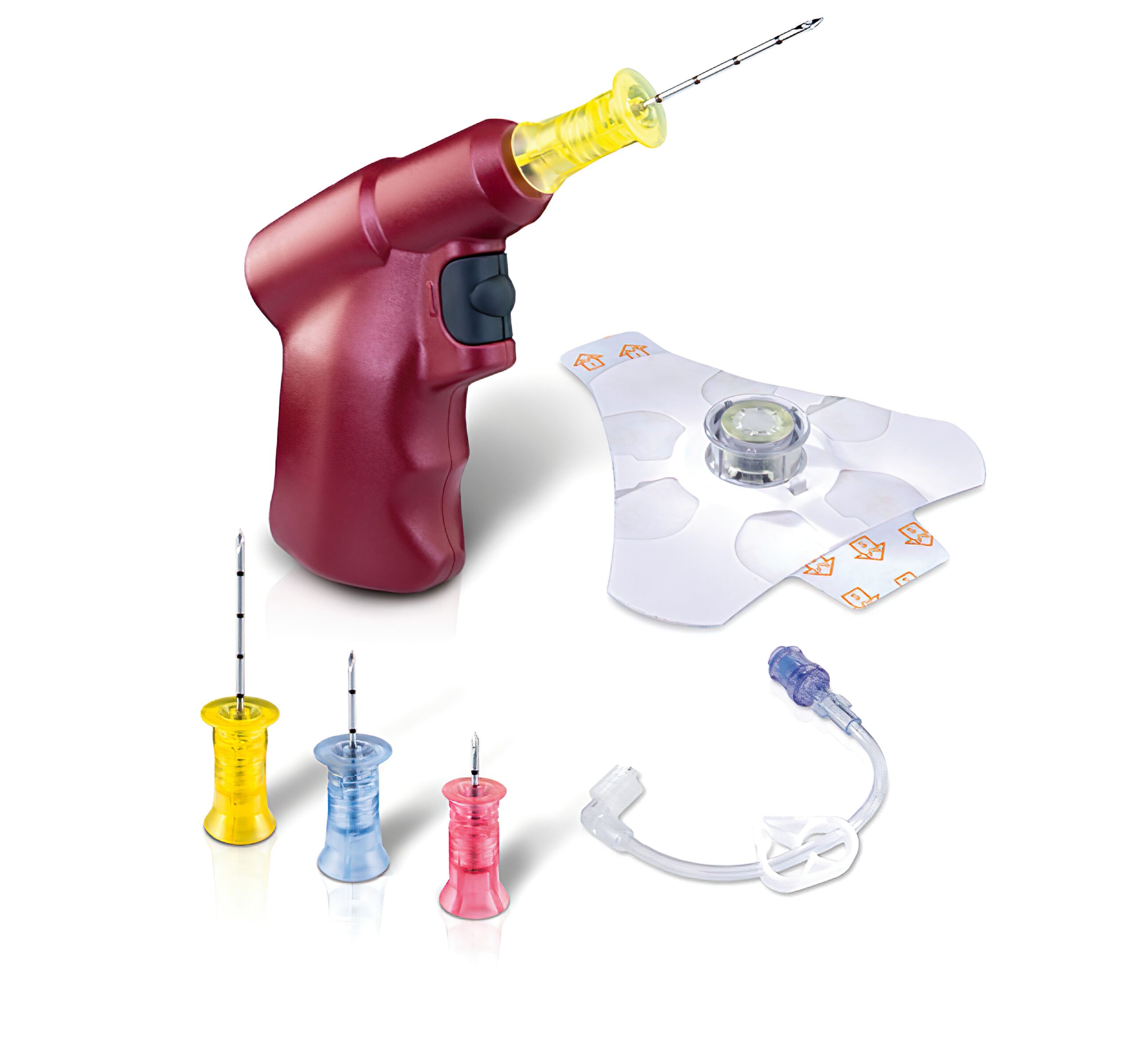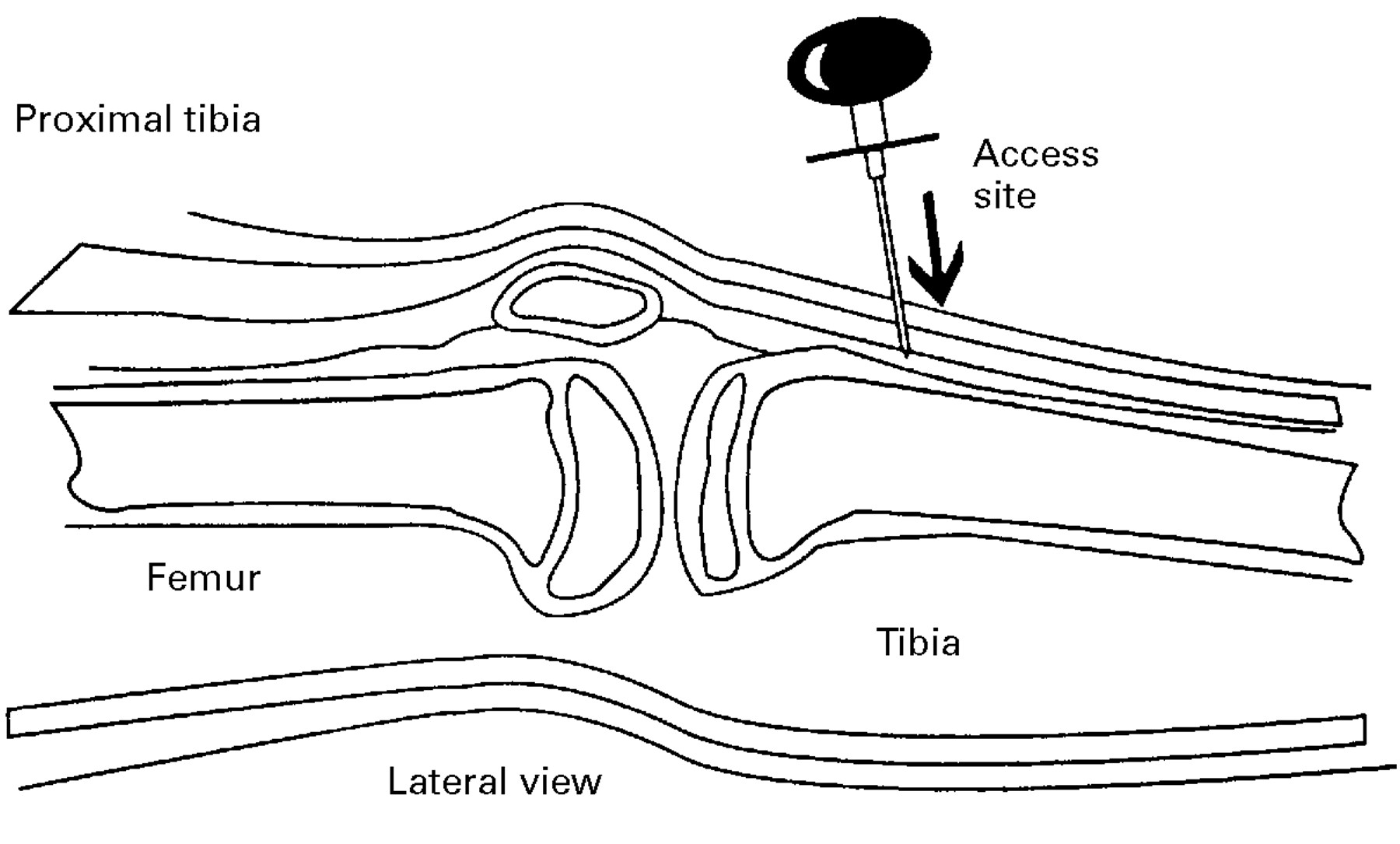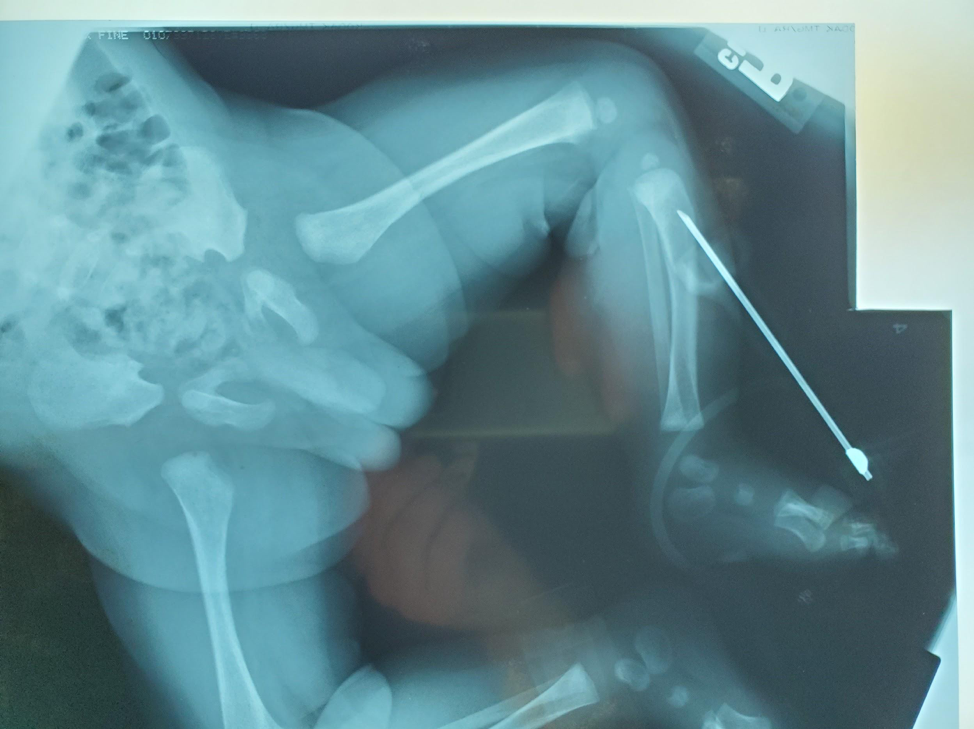Intraosseous Needle Access
Intraosseous (IO) access is an alternative route for administering epinephrine during neonatal resuscitation. The intraosseous needle requires the flat surface of a large bone. The bone marrow cavity and the network of medullary sinusoids inside large bones are noncollapsible channels that have access to the central venous circulation. Any medication that can be administered through the umbilical venous catheter can also be administered via an intraosseous needle.
The intraosseous needle is inserted with a drill or manually. If an institution lacks experience with neonatal intensive care, intraosseous needle insertion is a good alternative for fast and successful administration of IV epinephrine during neonatal resuscitation.

Intraosseous needle and drill equipment.10

Intraosseous needle access.11
Before placing an intraosseous needle, the provider first ensures that all of the necessary equipment is available. To place an IO needle, the clinician:
- Prepares the infusion set using a 3-way stopcock.
- Removes all air inside the tubing and the stopcock by injecting normal saline solution into the channels.
- Prepares the IO needle for the drill IO method.
- Selects the IO site. The flat superior one-third surface of either tibia is an ideal location for a newborn. The provider should choose a site that is about 2 cm below and 1 to 2 cm medial to the tibial tuberosity.
- Cleans the site with antiseptic solution.
- Holds the intraosseous drill perpendicular to the skin and presses the trigger while holding downward pressure. A change in resistance is detected with a “popping” sensation — this indicates that the needle is in the marrow space.
- Removes the stylet and connects the infusion set to the needle’s hub.
- Turns the stopcock to the “on” position and flushes the needle.
It is crucial to monitor the insertion site for signs of infection. The needle is connected to the bone and may cause a severe soft tissue infection or osteomyelitis.

Manual IO insertion. Note the very long needle placed by Mark Dzwonkiewicz FP-C over 25 years ago. Today’s IOs incorporate shorter needles and electric hand-held drills for placement.
10 Possible failure of Teleflex EZ-IO Needles. New Hampshire Fire Academy & EMS website. Accessed and image retrieved March 26, 2021.
https://nhfa-ems.com/clinical-bulletins/possible-failure-of-teleflex-ez-io-needles/
11 Ellemunter H, Simma B, Trawöger R, Maurer H. Intraosseous lines in preterm and full term neonates. Arch Dis Child Fetal Neonatal Ed. 1999;80(1):F74–75.